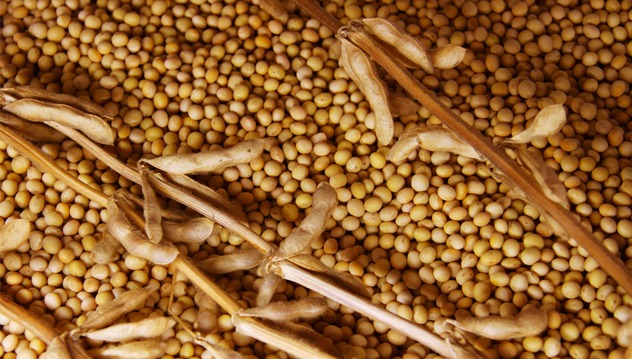This week's piece will be short, sweet and data driven. Soybeans have rallied more than $3 per bushel in as many months. Much of this has been based on expected declines in South American production as El Nino has wrought havoc on Argentinian and Brazilian farmers. However, the USDA numbers don't justify recent price gains while either viewing the recent Supply and Demand report on it's own or, within the context of tracking the USDA's actions since the market got rolling in early March. Therefore, we'll do the calculations and explain the current premium between the USDA's forecasted prices and where we're currently trading.
Since the terminology is important this week, we'll discussing the battle between the commercial traders, recognized in the Commodity Futures Trading Commission's weekly Commitments of Traders (COT) report as the Producer/Merchant/Processor/User and the two categories of speculative traders recognized as Managed Money and Other/Nonreportable. The interaction of the Producers and Merchants serves as the primary price discovery mechanism in supply and demand driven markets. The speculative traders help add liquidity to the process but mostly, are responsible for creating price distortions upon which we hope to capitalize. We'll use the recent COT report to illustrate their behavior in light of the USDA's recent report.
First, we need to ensure sufficient supply to meet this year's demand. The first major spring report is the USDA's March Supply and Demand (WASD) report. This sets the tone for the estimated carryover stocks and helps forecast necessary acreage, yields and prices to meet the growing year's demands. Most importantly, for this illustration is that soybeans were trading under $9 per bushel. Quoting from that report, "The U.S. season-average soybean price for 2015/16 is projected at $8.25 to $9.25 per bushel, down 5 cents at the midpoint."
Now, we'll fast forward to the May planting numbers of the WASD report. This gives us our first look at US planting numbers as well as the maturing South American acreage.

Expected global production is 315.86 million metric tons (mmt) with ending stocks at 74.25mmt. Global supply and demand was pretty well in line with the futures market prices. In fact, beans had gotten cheap enough that commercial traders had been on the buy side consistently from last November - March of this year near the $8.75 mid-point the USDA ended up pegging as the spring number. Coincidence? I think not. The commercial traders are exceptional value players as one might expect from such a deep-rooted community.
This is where things start to get squirrelly. Speculative buying begins to come in based on potential El Nino damage to the Argentinian and Brazilian crops. And boy, oh boy, do I mean speculative buying. Large speculators, small speculators and nonreportables bought more than 330,000 contracts between the March and June WASD reports. This is their largest position since July of 2012, one month before the ultimate top.

So, what changed heading into the new, June WASD report to justify our currently lofty prices?

The June forecast shows a decline of 2.6mmt. This is less than 1% and even including the 7% decline in carryover stocks doesn't justify the roughly 35% rally we've seen in the soybean futures. Our point here is obviously that the rally is overblown and leads us to the forecasting accuracy of the USDA's models. This seems appropriate since we're arguing that the market or, the USDA must be wrong. The University of Illinois is a fantastic resource for domestic corn and soybean information, data and studies as part of their FarmDocDaily program. The chart below shows the average end of year price compared to the May USDA WASD report. In summary, year-end prices average about 9% higher than the USDA's May predictions with a high of 48% during '03's drought to 11% lower in '08.

Which brings us to who's been pushing the market, other than Chinese soybean meal demand. It's the speculators!

History has proven time and time again that the speculators, particularly the small speculators tend to have their largest positions on at the most inopportune times. Given how overbought the soybean futures are, we feel a pullback is imminent and that it will come at the expense of the small traders' long positions.
See how we turn these calculations into actionable nightly trading signals at CotSignals.com.






